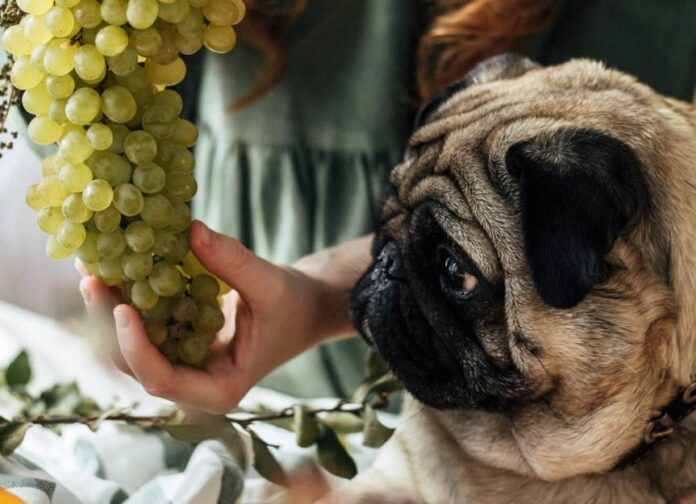Can Dogs Eat Grapes? The Dangers of Grape Toxicity
Important Note: Always consult your veterinarian before introducing new foods, especially human foods, to your dog’s diet. Factors like age, health history, and existing health conditions can affect whether certain foods are safe.
While grapes are a common snack for humans, they pose a significant health risk to dogs. All grape varieties—purple, green, red, and even dried raisins—are toxic to dogs. If you’re a dog owner, it’s crucial to be aware of the dangers associated with grapes and the immediate actions to take in case of ingestion.
Why Are Grapes Toxic to Dogs?
Grapes and raisins can be harmful for dogs for two primary reasons: toxic compounds and choking hazards.
1. Toxic Compounds Found in Grapes
The exact compound that makes grapes toxic to dogs has not been definitively identified, but current research suggests that tartaric acid, an organic acid, may be the culprit. Some dogs may metabolize this compound differently, leading to severe health issues, including kidney failure.
Notably, reports indicate that raisins are often more dangerous than grapes due to higher concentrations of the harmful substances.
It’s essential to understand that not all dogs will react the same way to grape ingestion. Factors such as the dog’s size, age, and overall health can influence the severity of the reaction, making it difficult to determine a “safe” quantity.
2. Choking Hazards
In addition to toxicity, grapes can also pose a choking risk, particularly for smaller dogs. Their size and shape can easily block a dog’s airway, leading to choking.
Signs of Grape Toxicity in Dogs
If your dog consumes grapes, it’s vital to seek veterinary assistance immediately, regardless of the quantity. Potential signs of grape toxicity include:
- Vomiting and/or diarrhea, often occurring within hours of ingestion
- Increased urination during the initial stages of kidney failure
- Excessive drinking, also a symptom of kidney issues
- Decreased urination or failure to urinate, indicating kidney shutdown
- Loss of appetite
- Lethargy or unusual quietness
- Signs of dehydration, such as skin elasticity checks
- Persistent bad breath
How Veterinarians Treat Grape Toxicity
The treatment for grape toxicity depends on the severity of the dog’s condition and the timing of ingestion. Vets may attempt to induce vomiting (do not try this at home) and administer activated charcoal to absorb toxins.
In cases of kidney failure, treatment may require IV fluid therapy and medications to support kidney function and alleviate symptoms. Affected dogs usually need hospitalization for observation and care.
What to Do If Your Dog Eats Grapes
If your dog ingests any grapes or raisins, contact your veterinarian or the Pet Poison Helpline at 855-764-7661. They may recommend immediate examination and treatment. Avoid inducing vomiting or administering charcoal without veterinary guidance, as incorrect practices can be harmful.
Even if you’re unsure whether your dog ate grapes, monitoring for toxicity signs within the first 24-48 hours is essential.
Safe Fruit Alternatives for Dogs
While grapes are off-limits, several fruits are safe for canine consumption, such as:
- Bananas
- Blueberries
- Mangoes
- Oranges
- Watermelon
Additionally, consider fruit-flavored treats specifically made for dogs. Always check that any new treat is appropriate for your pet.
FAQs About Dogs and Grapes
Can dogs eat green grapes?
No, dogs cannot eat any type of grapes. All varieties, including green grapes, are toxic.
Can dogs eat grape jelly?
No, grape jelly is not safe due to the potential presence of toxins and high sugar levels that can harm dogs.
What other fruits should dogs avoid?
Dogs should avoid avocados, wild berries, and cherries, as these can be harmful due to high fat content or the presence of toxic compounds.
Conclusion
Being informed about the dangers of grapes can help you protect your furry friend. If ever in doubt regarding your dog’s diet, consult your veterinarian for tailored advice. Your dog’s health and safety should always be the top priority.











